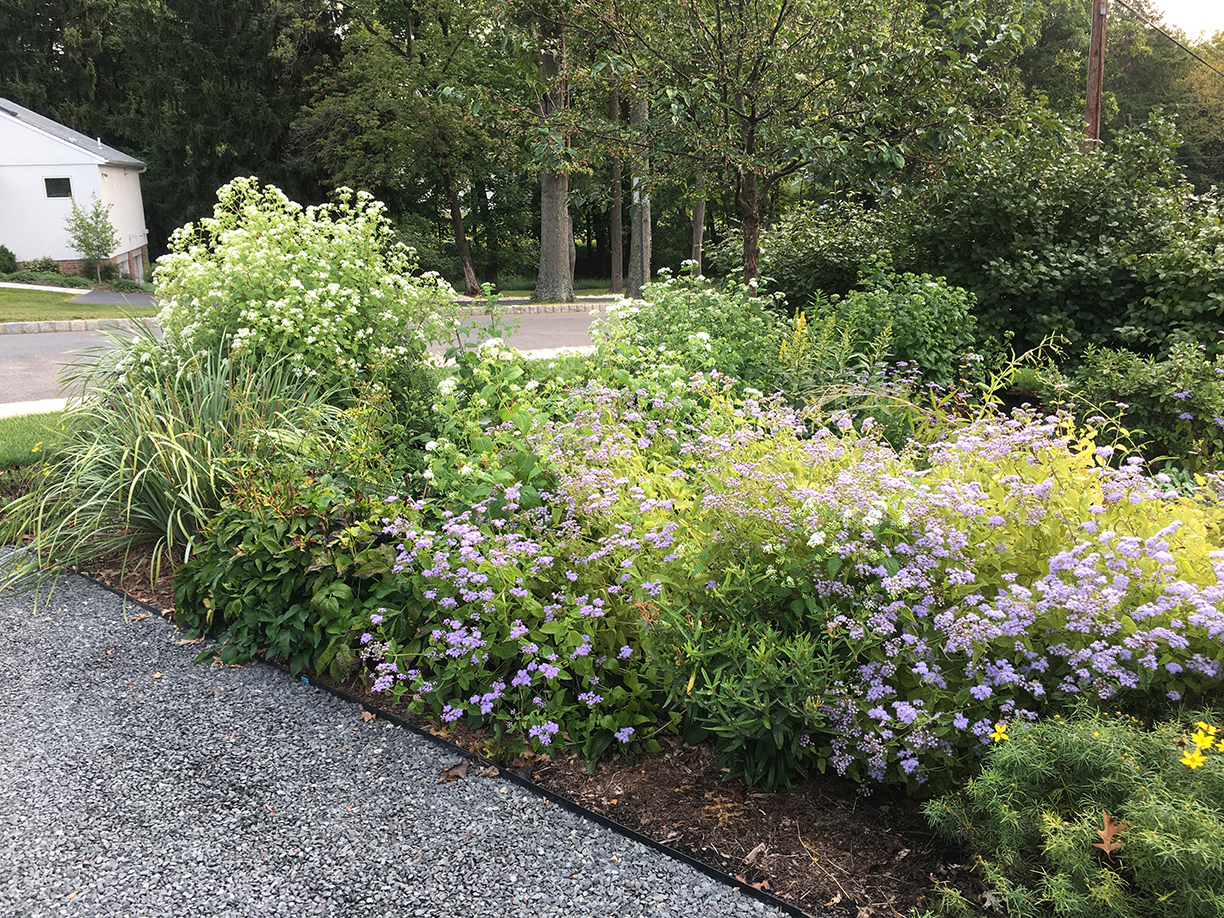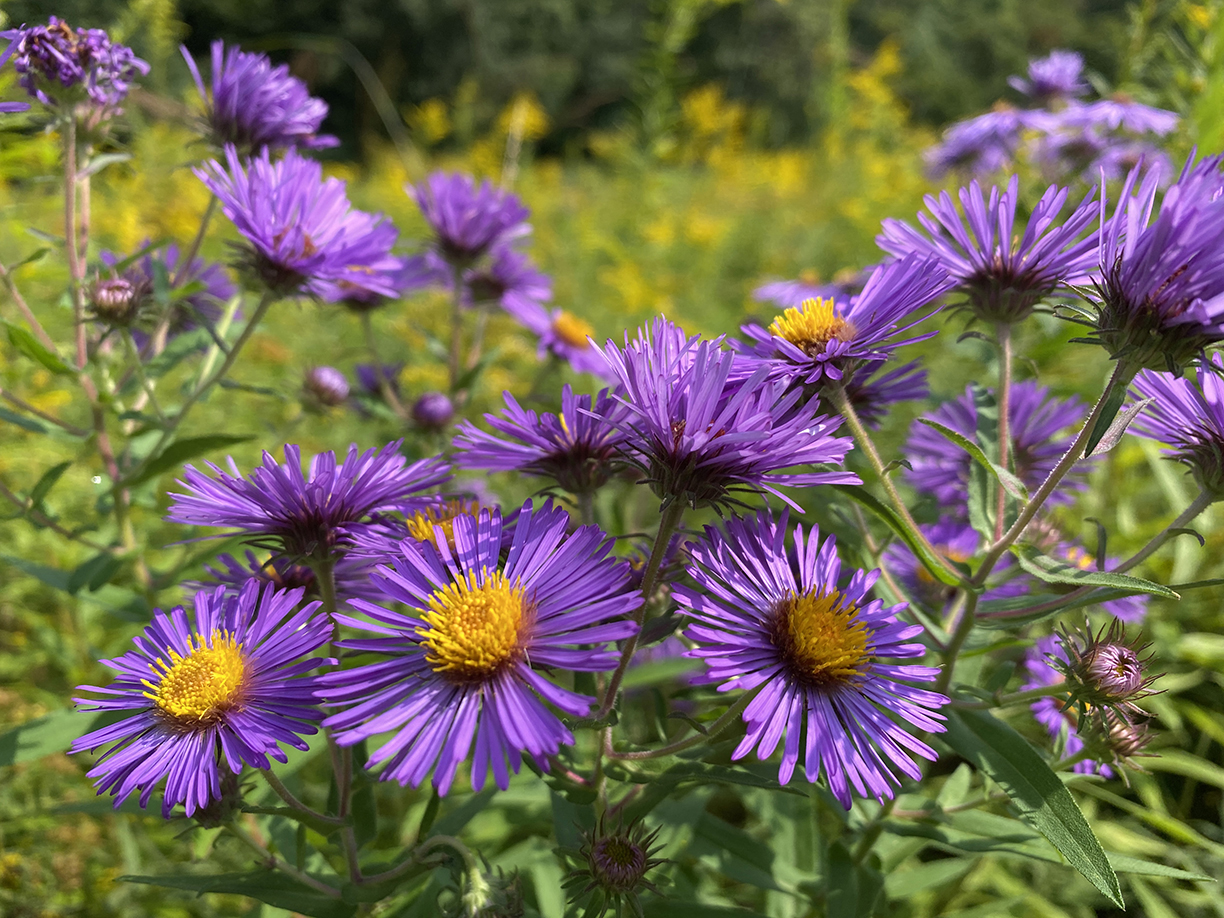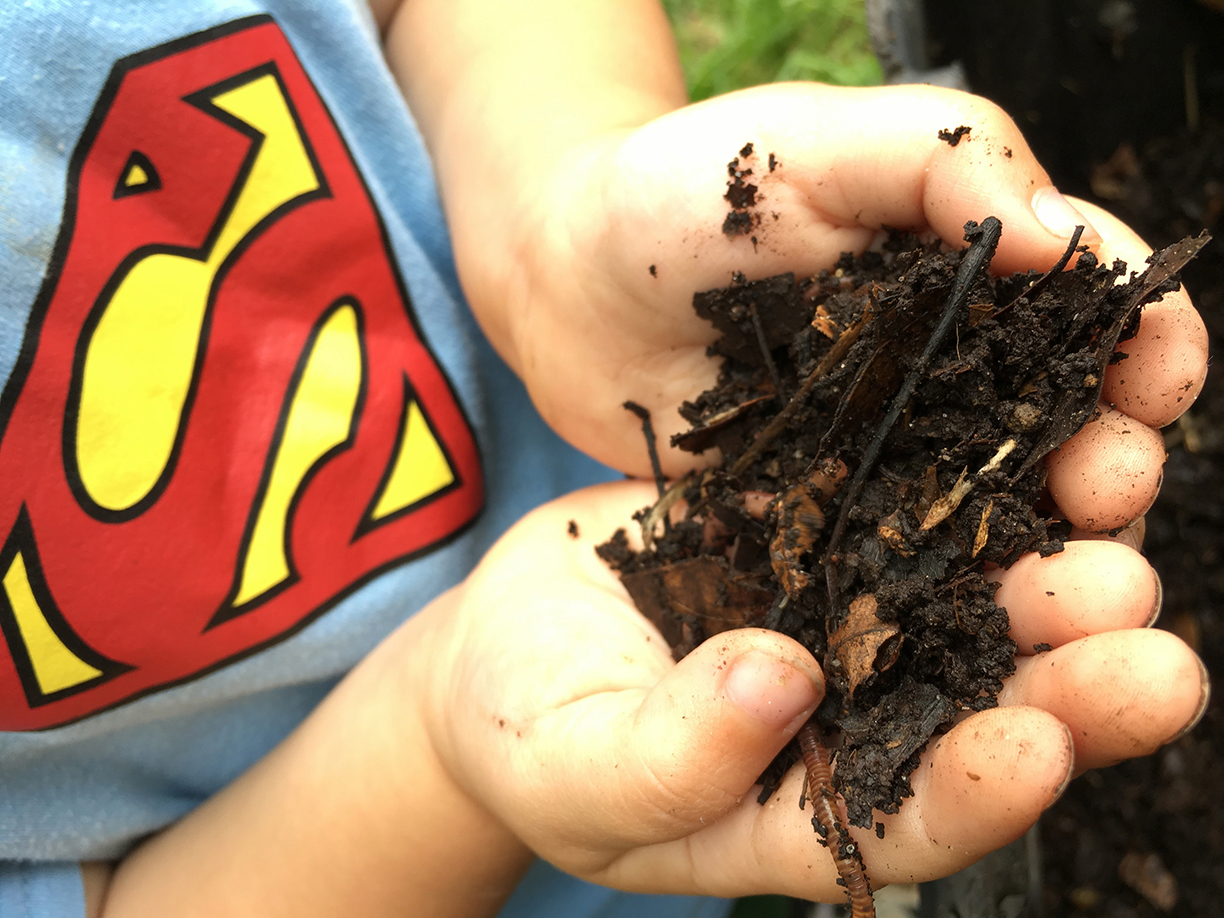Main Content
Sal Mangiafico, Michele Bakacs, Steven Yergeau, Amy Rowe, Jean Epiphan
The topic of gardening in a changing climate is a big one!
Instead of trying to cover this relatively vast topic, this month’s article will try to present a few key points, and list resources where our readers can learn more.
Principles
These principles can be applied to various kinds of landscaping: lawns, trees and woody ornamentals, and vegetable gardens.
- Have a climate-resilient garden
- Use plants that benefit your local environment
- Reduce carbon emissions by conserving water and fertilizer, reducing plastic use, and growing food that doesn’t need to be transported from far away.
- Improve soil health
Have a climate-resilient garden
Choose plants that will do well in a changing environment. Desirable plants may include those that are drought-resistant, heat-resistant, wind-tolerant, salt-tolerant, and may not be too bothered by large rain events.
Be sure to learn your United States Department of Agriculture (USDA) Plant Hardiness Zone and consider that while New Jersey is now largely in zones 6 and 7, over time these zones may change.
Consider stormwater management and drainage. During large rainfall events, will your garden be inundated and unhappy with wet roots, or can you safely move stormwater elsewhere with a swale or rain garden?
Fall is the new spring! Consider planting trees and woody ornamentals in the fall rather than in the spring. Quickly rising temperatures in the spring may be stressful for transplants. Cooler temperatures in the fall may require less watering, and there may be less weed competition.

(Image: Michele Bakacs)
Use plants that benefit your local environment
Hey Lorax, think of the trees!
From the University of Maryland, Sustainable Gardening: Solutions to Climate Change:
Use trees and other greenery around your home and community buildings to save energy.
Deciduous trees planted on the west, east, and southwest sides of a building block the sun during the summer and allow the sun to penetrate and warm the house during the winter.
Plant evergreen trees on the northwest side of a house to protect it from winter winds. Plant to provide shade over your air conditioning unit. Leave at least 3′ of space to allow for good air circulation
Reduce carbon emissions by conserving water and fertilizer, reducing plastic use, and growing food that doesn’t need to be transported from far away
- Go native! Use native plants as lawn alternatives, even in small areas, that require fewer inputs, particularly mowing, fertilizer, or irrigation. The Jersey-Friendly Yards native plant database can help you find the right plant for the right place.
- Replace gasoline-powered equipment with manual or electric tools.
- Use fertilizers judiciously. Test your soil to know how much fertilizer you should apply. Contact the Rutgers University Soil Testing Laboratory or your Rutgers County Extension Office for a test.
- Reduce the use of single-use plastics in your gardening.
- Compost food waste! Composting food scraps will keep them out of landfills, which helps reduce methane emissions and will also eventually provide a nutrient-rich amendment for your garden beds.
- Grow your food! Buying or growing local produce reduces the amount of fossil fuels used in food transportation. Nothing is more local than growing your own food.
From Oregon State University Extension Service, Top tips for gardeners to help fight climate change:
The fewer miles that food has to travel to your plate, the fewer emissions that are produced. Growing your own fruits, vegetables and herbs to supplement your diet is great. Also, visit local farmers markets and farm stands, or look for “locally grown” signs in the grocery store.
More information on food systems and climate change is presented by: Rutgers Cooperative Extension. Food Systems and Climate Change webinar.

(Image: Michele Bakacs)
Conserve water
- Use drought tolerant species
- Use water wisely: water deeply less often rather than watering a little bit every day. Consider watering in the morning when winds are calmer, resulting in less water evaporation to the air. Drip irrigation reduces evaporation, as well, and will also ensure water is delivered directly to plant roots rather than leaves or fruit.
- Consider a technological solution: soil moisture sensors, smart irrigation, or tracking reference evapotranspiration and rainfall. See: Rutgers Cooperative Extension, Landscaping for Water Conservation.
- Collect rainwater for irrigation using cisterns or rain barrels as an alternative source of water. See rainwater harvesting fact sheets and videos.
Improve Soil Health
The University of Maryland notes:
[Soils] store huge amounts of carbon in the form of carbon dioxide (CO₂) and organic matter, all of the living, dead, and decomposing plants, microbes, and animals that live in the soil. Carbon dioxide is the primary greenhouse gas that is warming the planet.
Warmer temperatures cause more rapid organic matter decomposition and turnover, especially if soils are tilled and uncovered.
They list six principles:
1. Keep soils covered with garden plants, groundcovers, mulches, and cover crops to reduce erosion risks and nutrient run-off, moderate soil temperatures, and slow the evaporation of water from your soil.
2. Minimize soil disturbance by limiting tilling and digging.
3. Keep living roots in the soil year-round. Plant roots leak sugars and other compounds that support microbial populations. This builds organic matter in the rhizosphere as dead microbes make up a big portion of soil organic matter.
4. Increase plant diversity to increase soil biodiversity. Different plant species support different populations of soil microorganisms. Increasing plant diversity aboveground will increase microbial activity and biodiversity underground as well as increasing carbon storage.
5. Test your soil. A basic soil test conducted by a soil testing lab will give you baseline information about soil pH (too high or too low can reduce nutrient availability and microbial populations), soil organic matter levels, and nutrient levels. The lab report will also come with the appropriate liming and fertilizing recommendations.
6. Fertilize with composts, and limit the use of chemical fertilizers.

(Image: Michele Bakacs)
References
Cornell Cooperative Extension. Gardening in a Warming World: A Climate Smart Gardening Course Book. cpb-us-e1.wpmucdn.com/blogs.cornell.edu/dist/1/7755/files/2018/11/Course-Book-Fall-2018-289zx3u.pdf.
New Jersey Climate Change Resource Center. Climate-Smart Gardening. njclimateresourcecenter.rutgers.edu/climate_change_101/climate-smart-gardening/.
Oregon State University Extension Service. Top tips for gardeners to help fight climate change. extension.oregonstate.edu/gardening/techniques/top-tips-gardeners-help-fight-climate-change.
Rutgers Cooperative Extension. Landscaping for Water Conservation. njaes.rutgers.edu/pubs/publication.php?pid=E341.
Rutgers Cooperative Extension. Food Systems and Climate Change (webinar). www.youtube.com/watch?v=l_lG3kz_C1g.
University of Maryland Extension. Sustainable Gardening: Solutions to Climate Change. extension.umd.edu/resource/sustainable-gardening-solutions-climate-change.
University of Maryland Extension. Improve Soil Health for a Climate-Resilient Garden. extension.umd.edu/resource/improve-soil-health-climate-resilient-garden.
University of Maryland Extension. Maryland Grows. Heat-tolerant vegetable crops and cultivars for the changing climate. marylandgrows.umd.edu/2022/01/21/heat-tolerant-vegetable-crops-and-cultivars-for-the-changing-climate/.
USDA-Agricultural Research Service. Plant Hardiness Zones. planthardiness.ars.usda.gov/.